Tirana: le joyeux boom
Suivez nos aventures en recevant notre newsletter toutes les semaines, inscrivez-vous en cliquant ici puis renseignez votre nom et email.
Tirana, 18 juin 2022
Arrivée à 8h dans le port de Dürres, nous débarquons un peu anxieux de ce qui nous attend. Comme disent les vaudois, nous serons déçus en bien!.
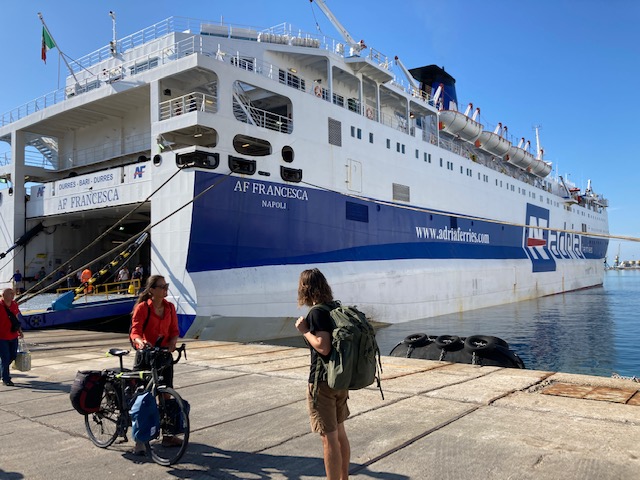
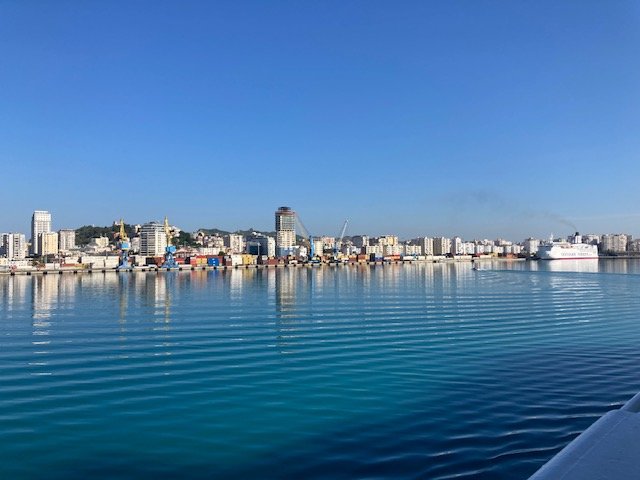
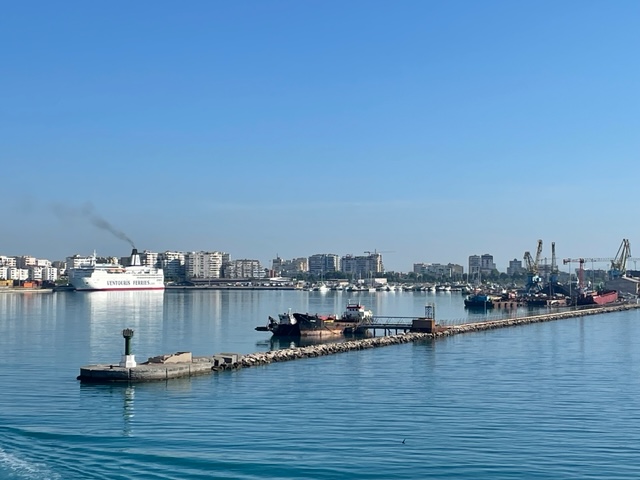
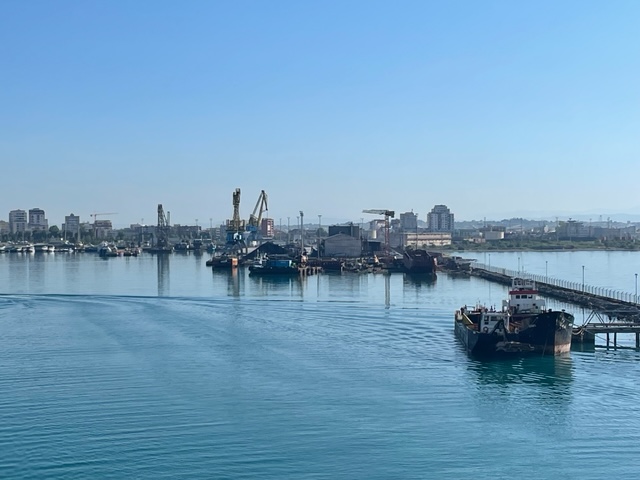
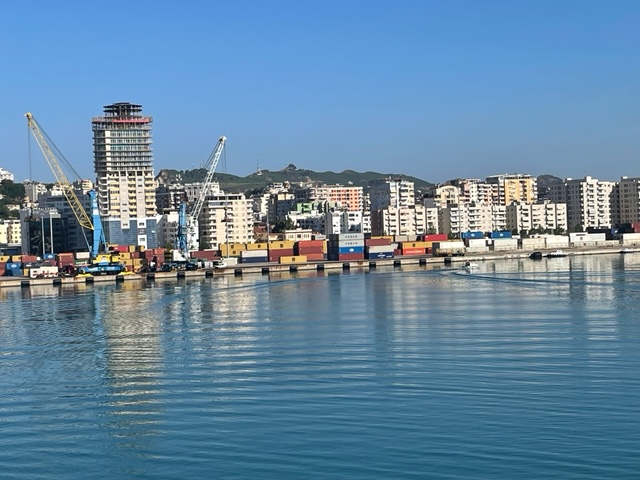

Nous trouvons rapidement le chemin de la sortie, passage de douane sans problème, installations hyper-clean, rues clean ( rien à voir avec Palermo à 5h du matin de nuit). Spontanément des albanais anglophones viennent gentiment nous proposer un coup de main pour démarrer notre nouveau périple. Nous retirons des « Lek » au bancomat « Raiffeisen-Albania », par fainéantise intellectuelle, nous restons sur un change de 100 Lek pour 1 franc suisse, la banque nos prélève une commission de 4% qui montera jusqu’à 5% , seules les banques espagnoles pratiquaient des commissions, nous voilà avertis.
Une sortie de port confortable
Le router de Google Map est inutilisable, les parcours vélos ne fonctionnent pas dans ce pays, donc nous utilisons Mapme.org et Komoot.com qui marchent très bien, pour éviter les autoroutes notamment, et les montées abusives. Départ tranquille sous un soleil de plomb pour 50 km de routes quasi plates, avec le trafic lié à un port qui s’estompe au fil des kilomètres. La route, c’est l’artère vitale, comme en Italie, tout s’y déroule, peu importe les parkings en simple, double ou triple file, devant ou derrière le dos de la Police. Entraînés par 8 semaines d’Italie nous sommes rassurés par des conducteurs attentionnés et calmes, certes certaines notions comme les sens interdits, sont différemment interprétées, mais c’est gérable.
Le port, les casses-autos
Les 30 premiers kilomètres sont à la gloire des casses-auto, à 90% dédiées à l’automobile allemande. 30 kilomètres de ferrailleurs auto- pièces détachées, tout s’achète, tout se vend apparemment.
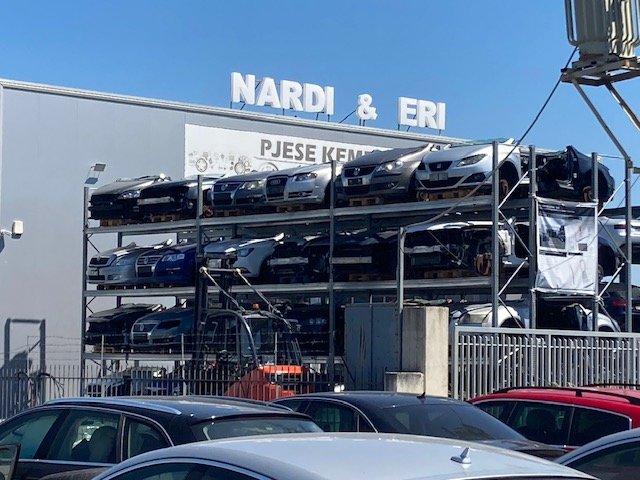
Les 20 derniers kilomètres seront l’habituel tissus de PME, surfaces commerciales et délires immobiliers qui font la saveur de toutes les banlieues. Par inattention nous nous retrouverons à 2 mètres de l’entrée de l’autoroute.
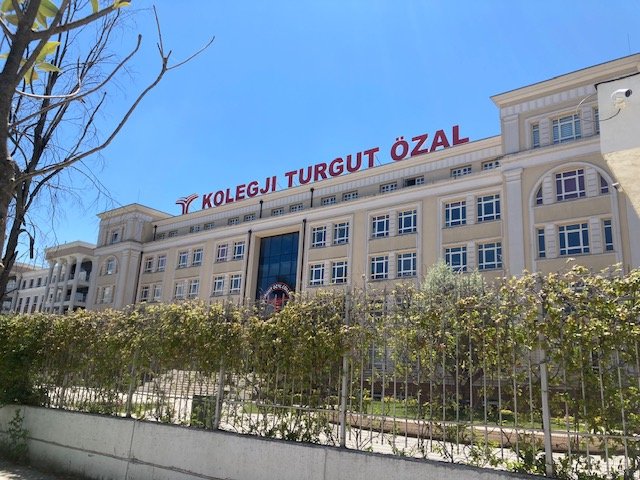
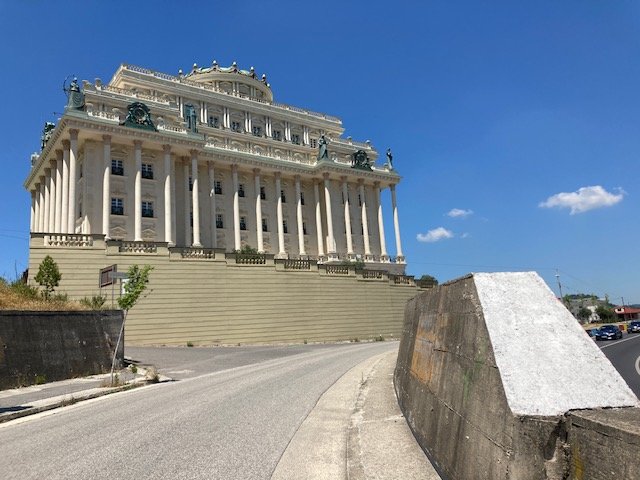
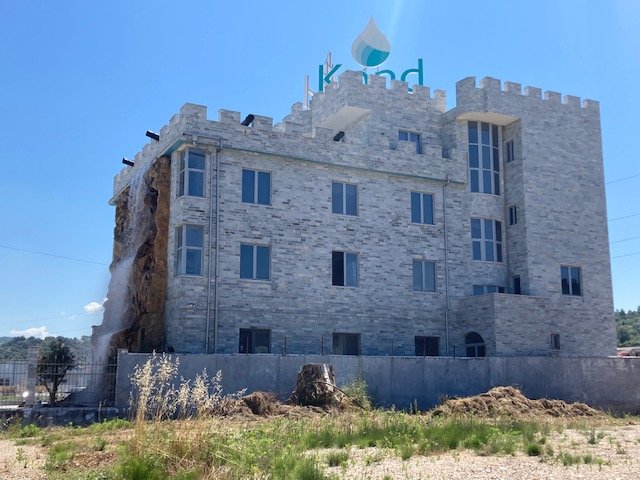


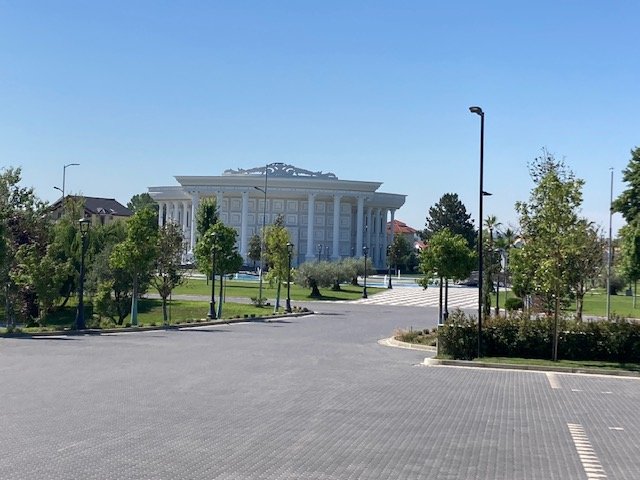
Un urbanisme en devenir
Nous passerons d’une route à une ruelle en gravier gorgée d’eau, pensant nous être trompés. Et non, bienvenu dans une ville dont la démographie et les complexes immobiliers grandissent plus vite que le travail des urbanistes. C’est fréquent à Tirana, certains quartier ne sont pas connectés avec d’autres, ou par des ruelles de 2 mètres de large. Selon notre guide Vangjel, patron de l’agence Albanie360°, la situation s’arrange désormais suite à la chute violente du communisme en 1991 et au développement sauvage d’un capitalisme à tous crins pour qui les services publics, ne sont pas vraiment une priorité.
Nous habitons dans un hôtel au centre-ville, reflet d’un urbanisme en devenir. Notre hôtel, familial, de 6 étages surplombent de vieux bâtiments en briques décrépies de 2 étages (Il y a des poules et des potagers), il est lui-même surplombé par des tours de 15 à 30 étages. Le tout avec un maximum d’arbres VERTS.
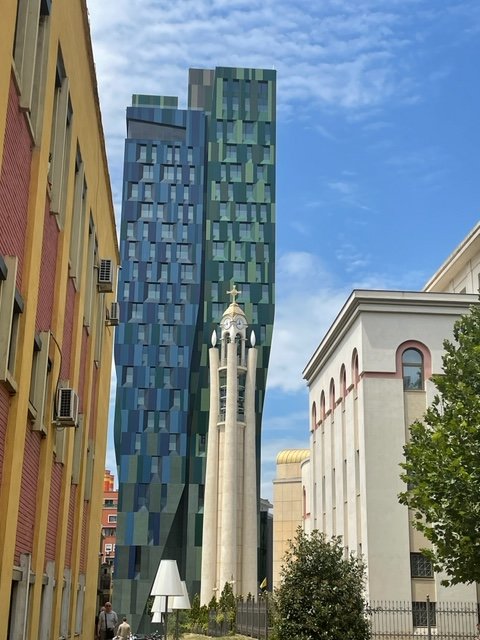
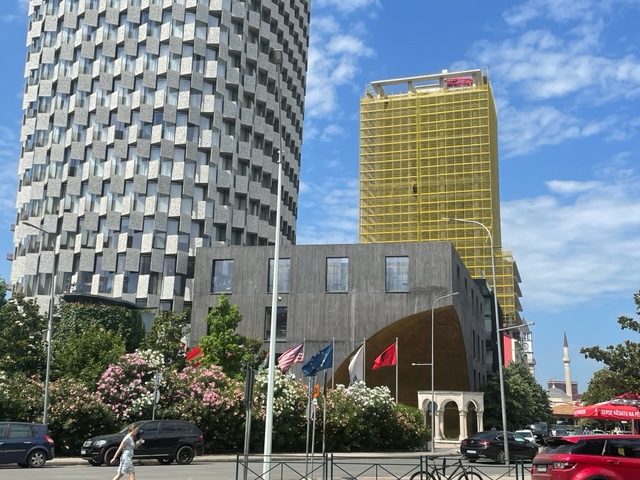
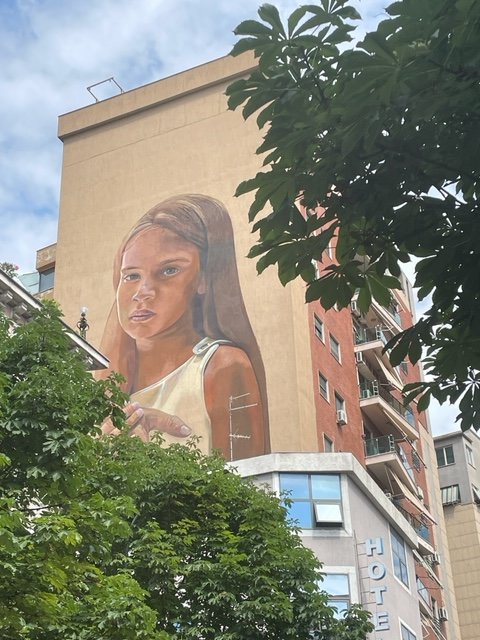
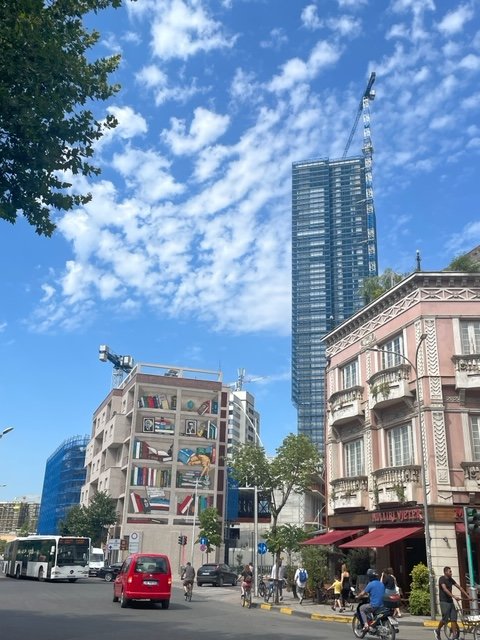
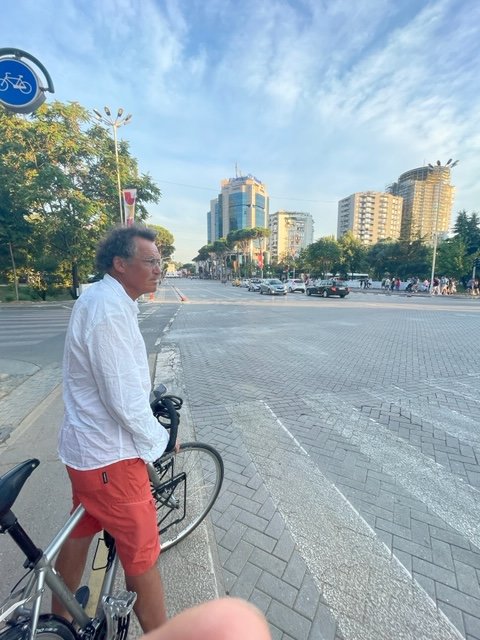

Enfin de la verdure dans les rues!
Certes, notre chemin ne cesse de remonter vers le Nord depuis le Sud de la Sicile, mais a bien y regarder, de nombreuses villes y compris en Suisse pourraient s’inspirer des plantations urbaines que nous utilisons tous les jours pour nous protéger d’un soleil violent. Le port de Dürres était noyés sous les tilleul et platanes. Tirana recense quasiment toutes les essences que nous avons en Suisse; peupliers blancs, sycomores, tilleuls, magnolia grandiflora sempervirens à fleurs éparses et feuilles persistantes, marronniers, châtaigniers, chênes, ficus, cèdres sapins, saules. Une diversité de grands arbres incroyables, plantés sur un sous-sol sableux alimentés par une nappe phréatique très active. Les massifs dans les parcs sont constitués de plantes médicinales à 50% et d’autres plantes endémiques qui donnent un côté sauvage, naturel, de delta de rivière , une ambiance qui permet d’enchâsser des constructions modernes massives (Constructions parasismiques). Cette verdure est présente partout dans la ville, sur les multiples terrasses de café dans les restaurants, c’est un vrai plaisir de revoir du vert. Les abords de la ville sont au Nord des montagnes de plus de 1000 mètres de haut toutes verdoyantes.
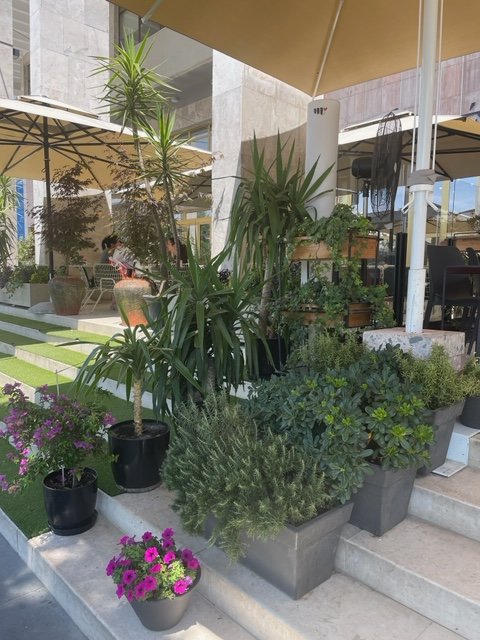
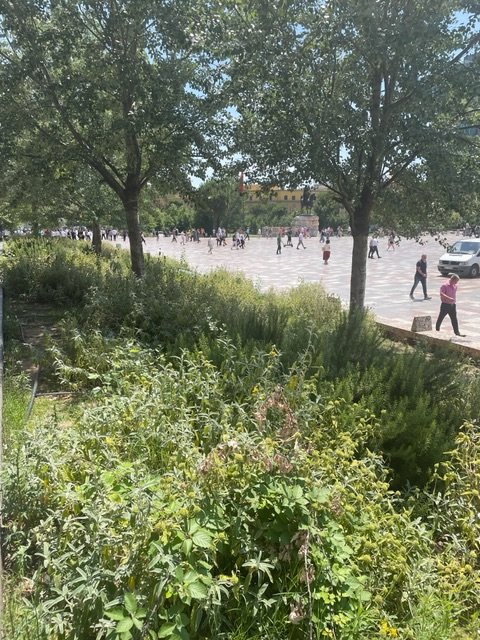
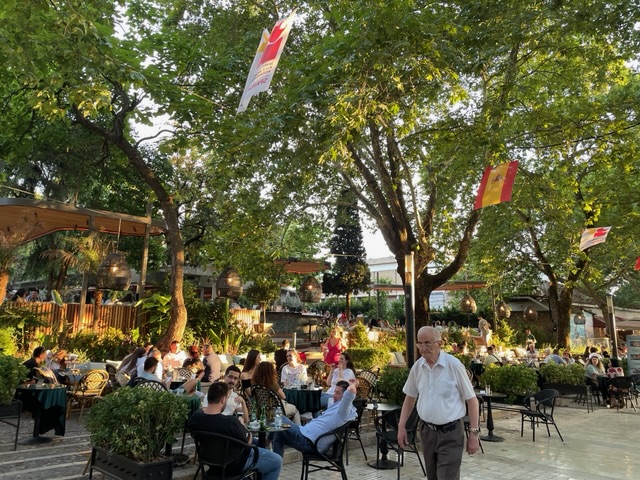
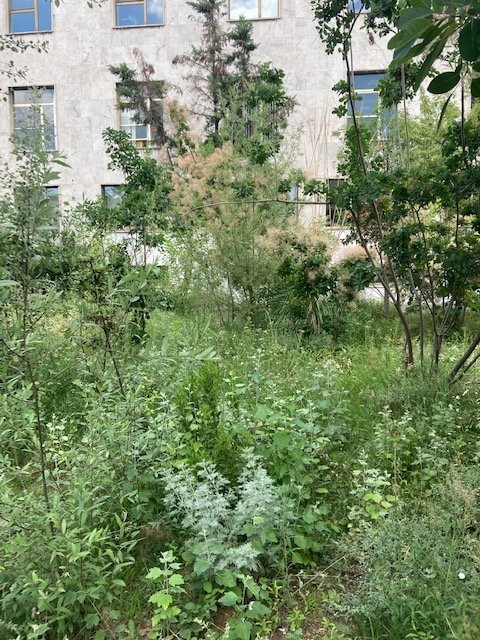
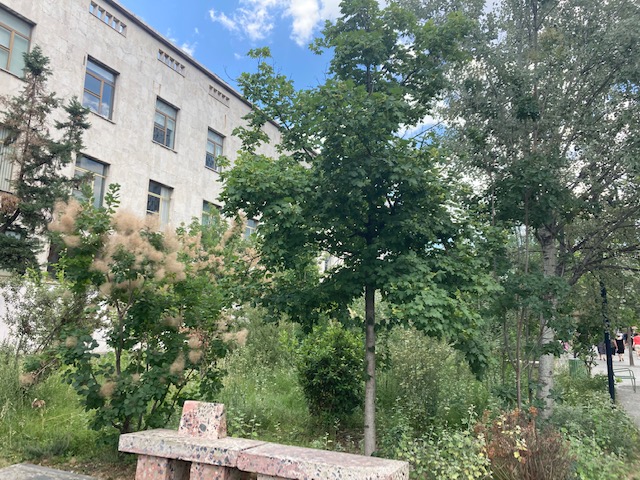
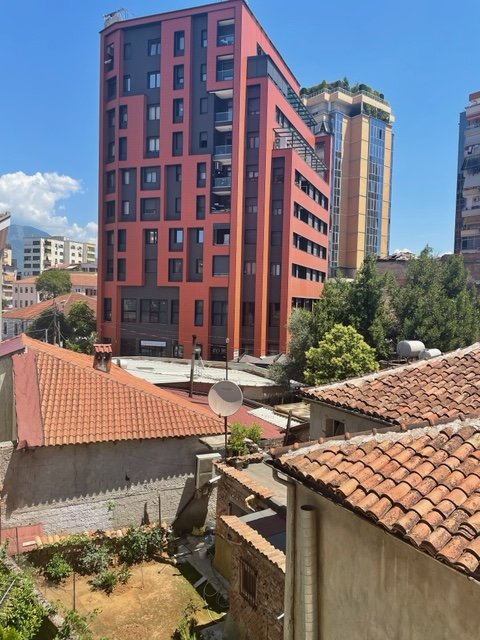
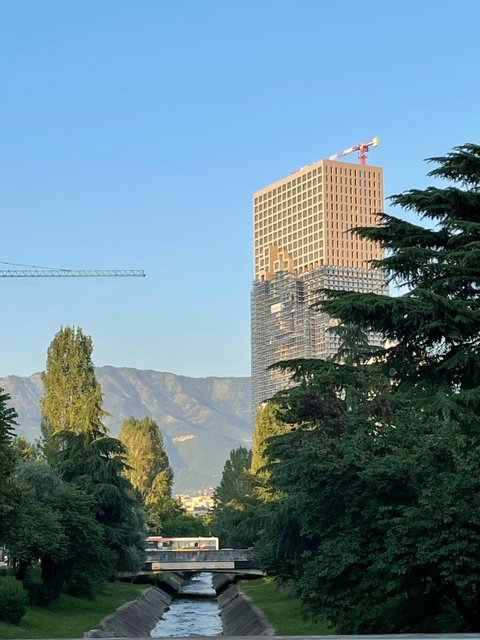

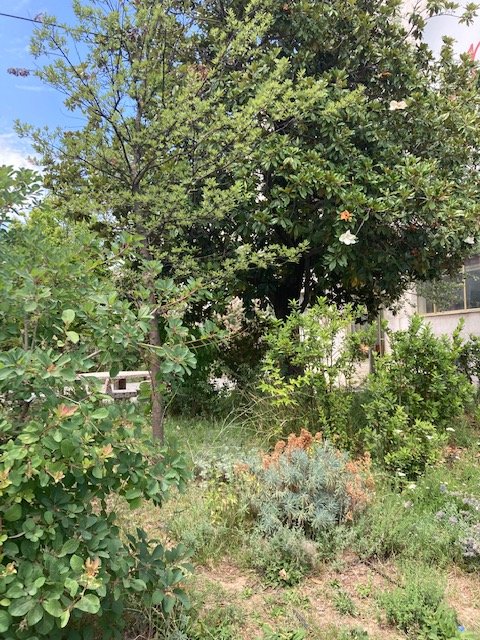
Circuler à Tirana, c’est facile car contrairement à l’Italie, nous ne sommes plus seuls, les vélos seraient en masse depuis la hausse importante du prix de l’essence. Les grands boulevards tracés au cordeau sont doublés de pistes cyclables. Ville en plein essors, de 12’000 habitant en 1900 à plus d’un million (33% de la population du pays), Tirana présent l’aspect d’une ville jeune, immense, de multiples quartiers avec une vie de terrasses de bistrots ombragés.
8 tours modernes en cours de construction bordent la place centrale Skanderbeg, sans selon notre ressenti bouleverser le paysage. Architectures audacieuses, les tours donnent une dynamique aux lieux et des points de vues multiples très étudiés, intégrant de-ci, de-là des minarets. Oui l’orient en Albanie pointe son nez très fortement, nous sentons que nous sommes à un carrefour. L’école turque est solidement implantée avec un bâtiment impressionnant par sa taille, des détails architecturaux, trahissent une domination ottomane durant le moyen âge . Nous sommes aux Balkans, une histoire lourde de rebondissements où les italiens étaient très présents et le restent dans la langue, la restauration, un certain art de vivre. Si à la tombée du soleil, les rues s’animent, les terrasses se remplissent, c’est une dynamique qui nos plaît par son exubérance mesurée, mais tellement plus sympathique que la place du Palais Fédéral après 18heures à Bern!!

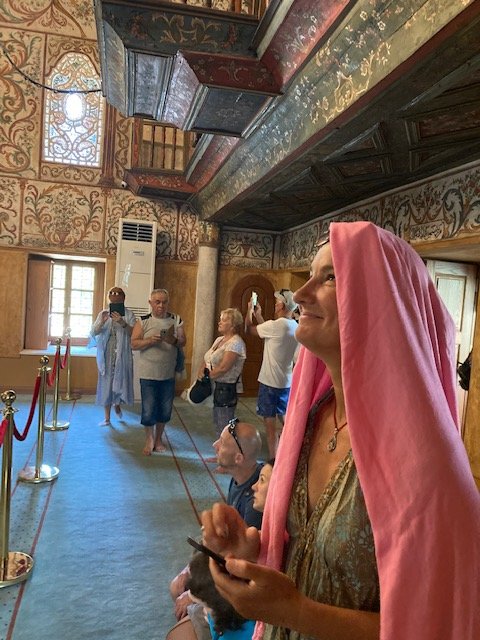
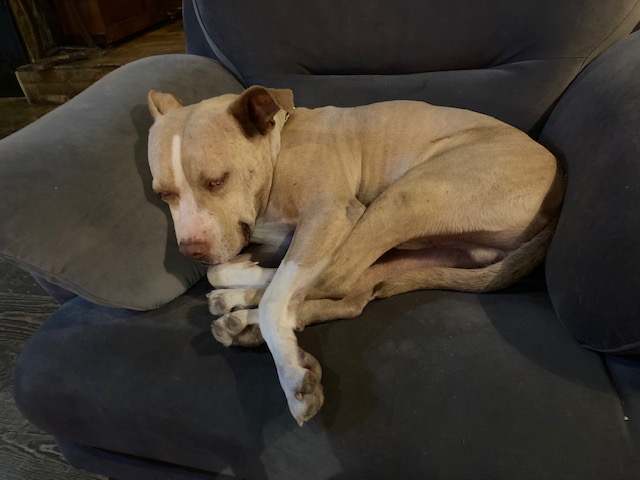
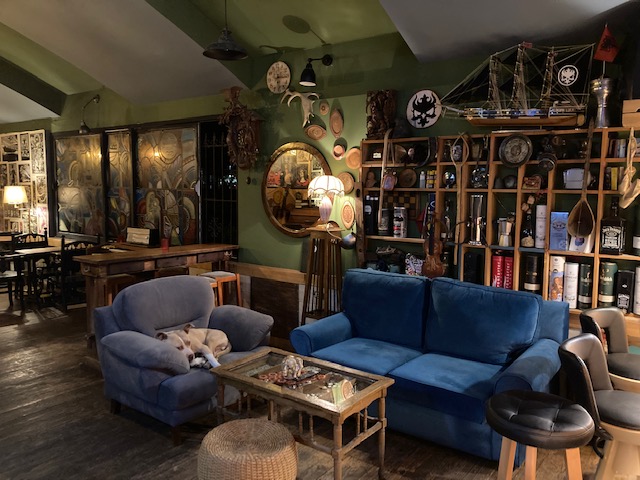
En parlant anglais et italien, nous n’avons aucune peine à nous faire comprendre, les restaurants sont très accueillants, la tolérance semble un art de vivre ici, après 48 heures de découvertes.
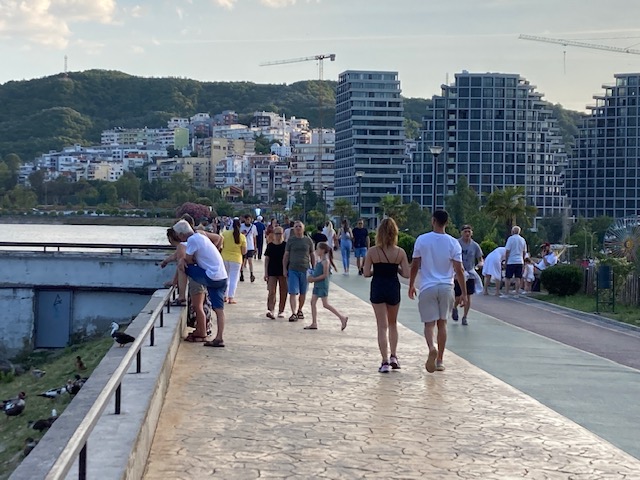
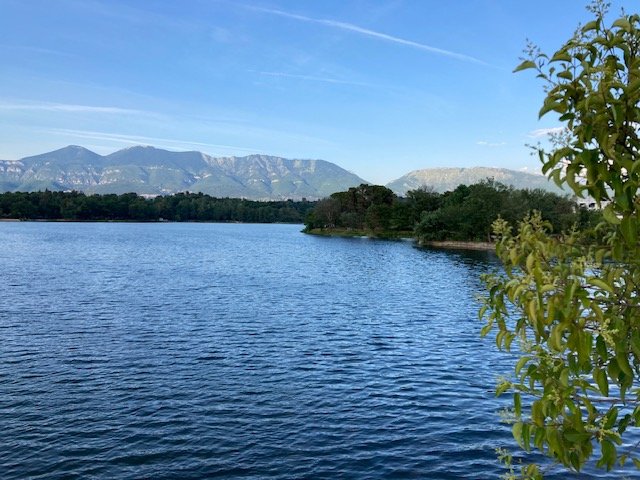
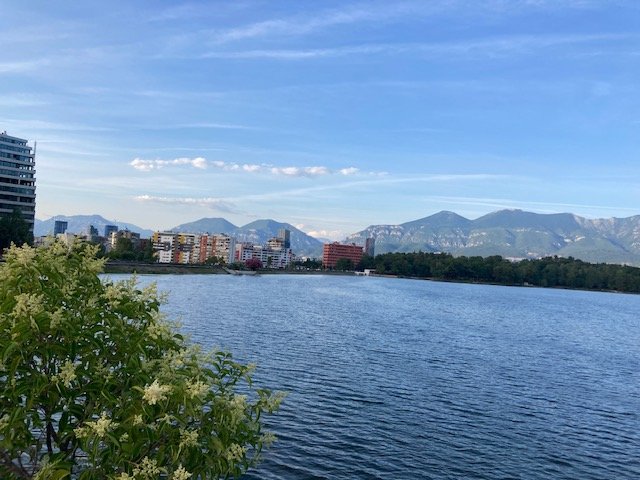

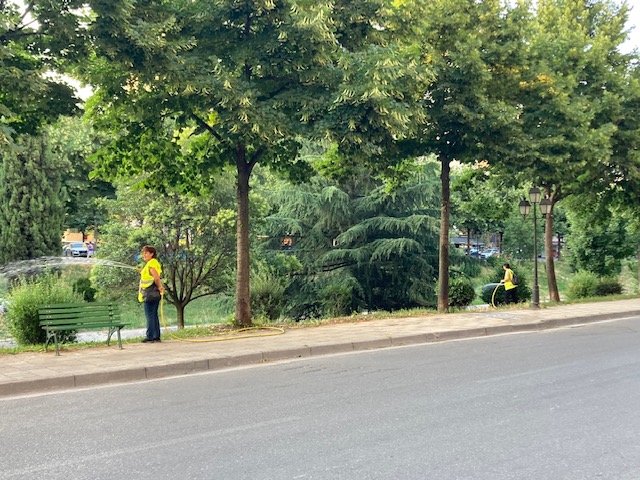
Une réponse